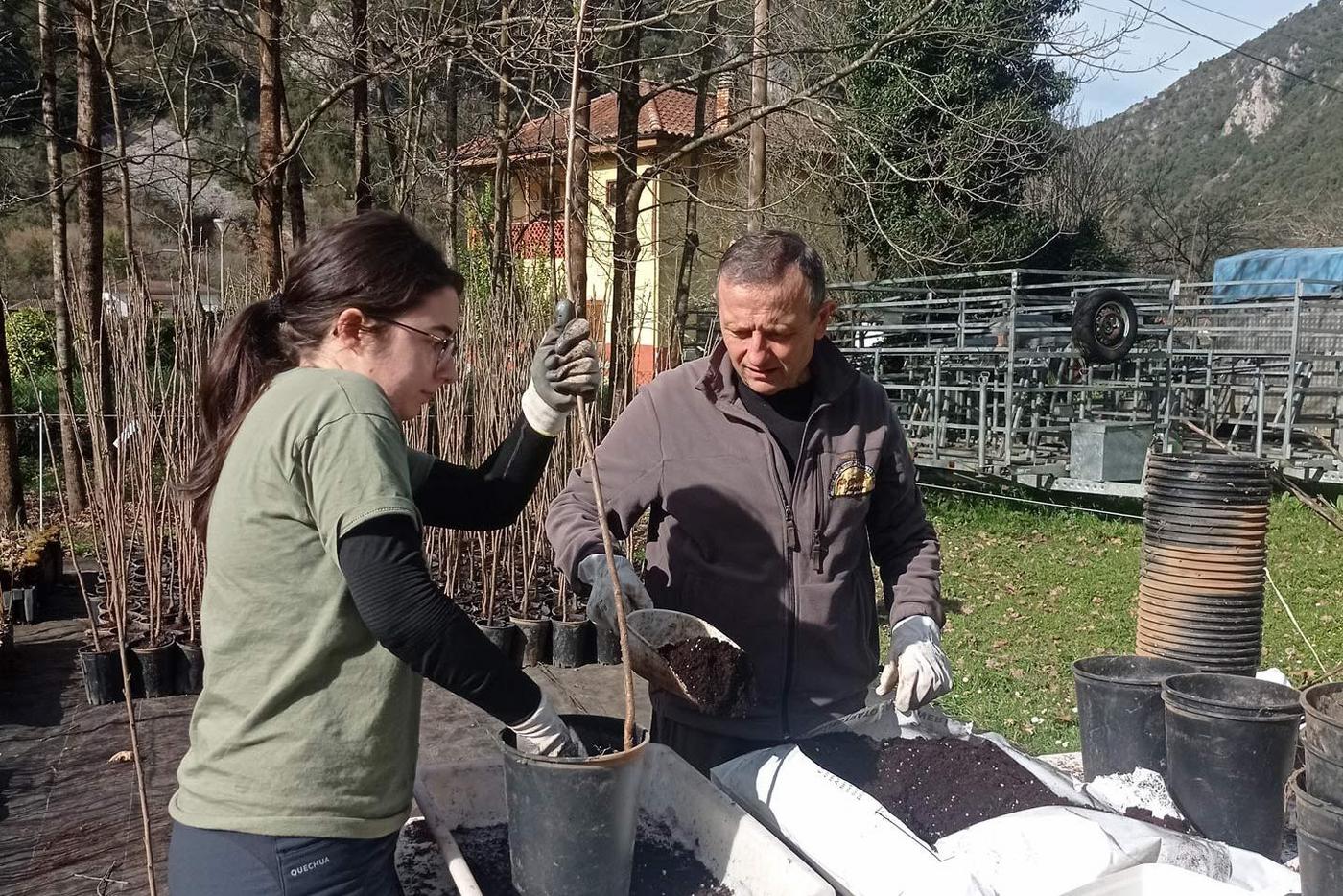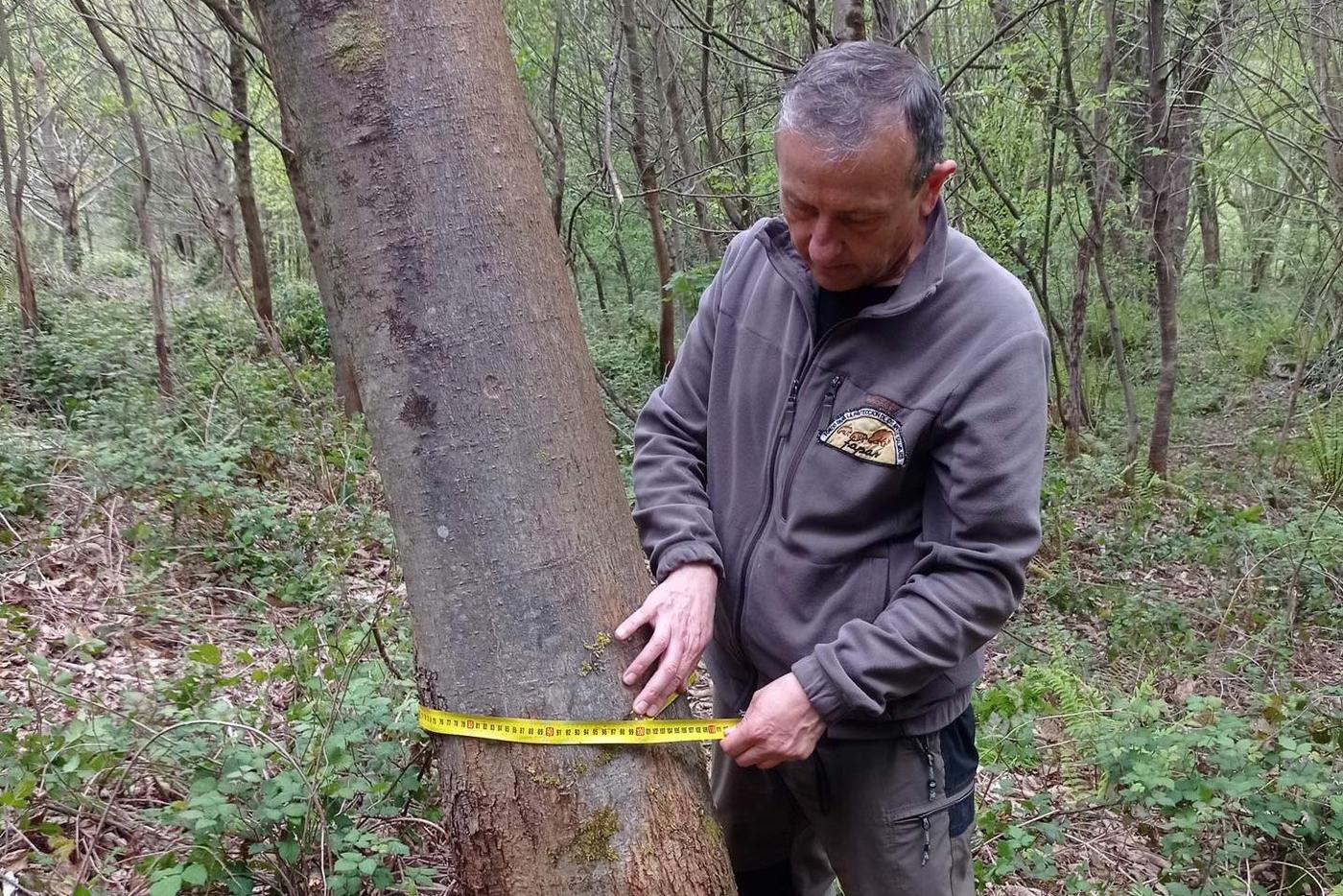
Broken branches, plundered cherry trees, a pile of droppings in the meadow - it's impossible to overlook: a powerful animal has been at work here. "This bear has to go!" hisses the owner of the property in Villarino del Sil, a village in the northern Spanish province of León. It won't be easy to placate him. But that is precisely what we need to do now, say Doriana Pando and Roberto Hartasánchez from the EuroNatur partner organisation Fapas. "The people in the villages are unsettled because bears have only recently returned to the area and the government has been stirring up public opinion against the animals. We want to do something positive to counteract this." The two are determined to sort this out. With our 'Fruit trees for gourmets' project, the idea is to defuse the situation as quickly as possible and improve it in the long term.”
At a safe distance from the village
Doriana and Roberto want to show how humans and bears can coexist peacefully. The campaign aims to create new food sources for the bears and at the same time enable Fapas to build up a rapport with the people in the villages. "We want to work with as many landowners as possible. The fruit trees are to be distributed across hundreds of largely uncultivated small plots located at a safe distance from the villages," explains Roberto. "It's important to us that every tree survives! We are providing cherry, plum and apple trees from the Fapas nursery that are sufficiently large and hardy. By planting the trees only at the edges of the plots and installing metal grills to protect them from being damaged by animals, the areas can also be used as grazing land for livestock. In addition, the landowners receive a bonus of 10 euros per tree from us and can harvest the fruit. In this way, we want people to stop seeing bears as a problem and instead associate them with something positive."
It is not surprising that the bears approach human settlements. Especially in years of drought, when the oaks produce no acorns, they cannot find enough food in the forests south of the Cantabrian Mountains. Fruit trees in gardens then attract them like magnets. The bears also less likely to be scared away as rural depopulation means that most villages in the province of León are home to very few people these days. Normally, the bears are peaceful, but they do cause damage and incur the wrath of the remaining villagers.
Doriana and Roberto are very worried about a smear campaign that was launched last year against the female bear "Lechuguina". The female bear has already given birth to several cubs and plays a particularly important role in maintaining the bear population. Nevertheless, the government of the Autonomous Community of Castilla y León is now considering having the animal captured and locked up in an enclosure. "Spending the rest of her life in captivity would be torture for Lechuguina and a major setback for bear conservation," says Roberto Hartasánchez. The key to this campaign is influencing how bears are dealt with in the province of León in the future.
Fapas
-
Our strong Spanish partners
"We are thrilled"

The first cherry trees were planted at the beginning of spring. Many more followed in subsequent weeks. "The mayor of Villarino del Sil was very open to our campaign and the media also reported favourably on it. It looks like we are well on the way to creating a model project with the 'fruit trees for gourmets'," says Doriana Pando. If things go well, the approach could soon become standard in the bears' southern range. It has already proved successful in a similar form in the west of the Cantabrian Mountains. In April, rangers from Fapas checked one of the first areas in the Trubia Valley where they had planted chestnut and cherry trees almost 15 years before with the support of EuroNatur. The campaign was called "Fruit for the Bears" at the time and was similar to "Fruit Trees for Gourmets". "We are delighted," reports Roberto Hartasánchez, “after all these years, a wonderful forest of chestnut and cherry trees has grown up here. The trunks of some of the chestnut trees already have impressive circumferences of up to one metre. The cherry trees grow more slowly, but they too are already bearing plenty of fruit. The planting has further improved the ecological value of the area and provides plenty of food for bears and many other animals - cherries in spring and chestnuts in autumn.”
Bear scats over the course of the year
Bears are omnivores and their diet varies greatly depending on the season and region. Their scats are usually large and the contents easy to recognise. Brown bears are creatures of habit and prefer to use existing paths, making it easy to track down their scats. Colour, texture and smell all reveal what the brown bear has eaten. Here are a few helpful guidelines:
-
Spring/Summer
-
Autumn
-
Winter
Valuable legacy
Bear scats provide scientists with data without having to get close to the animals. For example, they can use faecal samples to determine sex and health status. The cortisol level can even provide information about the animal's stress level. Bear faeces can also help to spread plant seeds. A particularly practical feature of that is the fertiliser supplied with the droppings.


